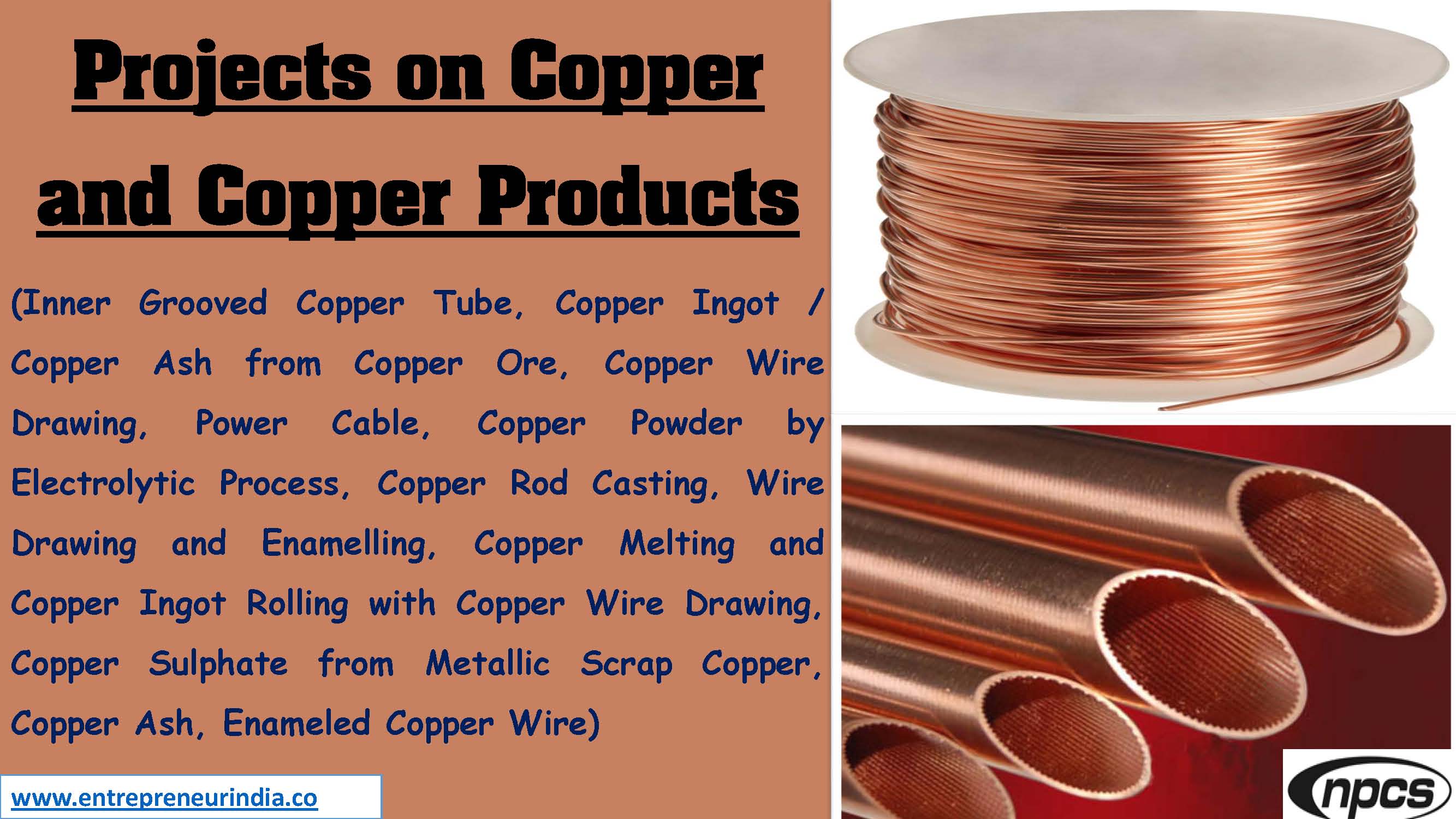
Copper Products India’s rising demand for water purification, air filtration, food processing, and chemical recovery systems has spotlighted one key material: Activated Carbon. Known for its exceptional adsorption properties, this carbon-based material is used across diverse sectors such as pharmaceuticals, agriculture, cosmetics, and environmental engineering. Moreover, with increasing concerns over pollution control and product purity, the business opportunity in Activated Carbon production—whether powdered or granular—is more promising than ever.
Activated Carbon Projects | Powdered & Granular Forms
Activated Carbon is a processed form of carbon with a high surface area and porosity, used primarily to remove contaminants from liquids and gases. It is typically derived from carbonaceous sources like coconut shells, wood, coal, or nutshells. The two primary commercial forms are Powdered Activated Carbon (PAC) and Granular Activated Carbon (GAC), each suited for specific applications. With India’s growing industrialization and water treatment needs, venturing into Activated Carbon projects offers substantial scope for scalable, export-friendly, and profitable operations.
Types of Activated Carbon
Activated Carbon is available in various forms depending on particle size, source material, and activation process. The most commonly used types include:
-
Powdered Activated Carbon (PAC): Fine particles used in liquid-phase adsorption applications like water treatment, sugar refining, and pharmaceuticals.
-
Granular Activated Carbon (GAC): Coarser material ideal for air purification, industrial gas cleaning, and large-scale water filtration.
-
Pelletized Carbon: Cylindrical forms used in gas-phase filtration and emission control systems.
-
Impregnated Carbon: Enhanced with chemicals for specific contaminant removal (e.g., mercury, ammonia).
Moreover, the selection depends on application type, flow rate, pressure drop, and reactivation potential.
Read Also :Small Scale Business
Raw Materials and Sourcing
A wide range of raw materials can be used to produce Activated Carbon, each offering distinct characteristics:
-
Coconut shells: Preferred for high hardness and microporosity; widely used in Asia.
-
Wood charcoal: Known for its mesoporous structure; used in gas adsorption.
-
Coal (bituminous or lignite): High yield, cost-effective; mostly for industrial use.
-
Peat and nutshells: Low-cost alternatives for specific filtration applications.
Moreover, sourcing local biomass or agricultural waste ensures cost-efficiency and environmental sustainability.
Manufacturing Process
Producing Activated Carbon involves a multi-step process that transforms carbon-rich raw materials into highly porous adsorbents:
-
Carbonization: Raw material is heated in an inert environment to produce char.
-
Activation: Two main methods are used:
-
Physical activation: Uses steam or carbon dioxide at high temperatures (800–1000°C).
-
Chemical activation: Involves agents like phosphoric acid or potassium hydroxide at lower temperatures.
-
-
Crushing & Sieving: Final product is ground to desired particle size (powdered or granular).
-
Washing & Drying: Removes impurities and residual chemicals.
-
Packaging: Done in moisture-proof bags or containers.
Moreover, automated control systems and digital thermocouples can improve consistency and reduce batch variability.
Required Machinery & Setup
Setting up an Activated Carbon production unit requires the following equipment:
-
Carbonization kilns or rotary furnaces
-
Steam or chemical activation chambers
-
Screening machines
-
Grinding mills (for PAC)
-
Cyclone separators and dust collectors
-
Washing tanks and drying units
-
Packaging machines
Moreover, environmental compliance systems like scrubbers and effluent treatment plants (ETPs) are mandatory.
Investment & Profitability
The capital required depends on scale, type of carbon produced, and level of automation:
| Type of Unit | Investment (INR) | Monthly Profit Potential |
|---|---|---|
| Small-scale PAC unit (5 T/month) | ?20–30 lakhs | ?1 – ?2.5 lakhs |
| Medium GAC unit (20–30 T/month) | ?50 lakhs – ?1 crore | ?3 – ?6 lakhs |
| Industrial turnkey plant (>100 T/month) | ?2–3.5 crores | ?8 – ?12 lakhs |
Moreover, by-products like tar and combustible gas can be recovered for fuel use, improving margins.
Key Applications and Markets
Activated Carbon has an extremely wide market base:
-
Water purification (municipal and industrial)
-
Air filtration systems
-
Food and beverage (decolorization, deodorization)
-
Pharmaceuticals (API purification)
-
Gold recovery in mining
-
Chemical industries (solvent recovery)
-
Cosmetics and personal care
-
Agriculture (soil detox and pesticide residue absorption)
Moreover, the increasing use of household water filters and air purifiers creates retail opportunities for branded carbon cartridges.
Regulatory and Environmental Compliance
Producing Activated Carbon requires compliance with environmental and industry standards:
-
Pollution Control Board NOC
-
Hazardous Waste Authorization (if chemical activation used)
-
Factory License
-
GST registration
-
ISO 9001 and ISO 14001 (for exports or OEM contracts)
-
FSSAI certification (for food-grade carbon)
Moreover, plants must manage emissions and ash residues responsibly to prevent environmental damage.
Export Potential and Global Demand
India exports Activated Carbon to more than 100 countries, including:
-
USA
-
Japan
-
South Korea
-
Germany
-
UAE
-
Brazil
Global demand is rising due to its use in air quality control, wastewater treatment, and environmental restoration. Moreover, coconut shell-based carbon from India is especially valued for its purity and hardness.
Value Addition and Branding
Entrepreneurs can enhance margins by:
-
Producing branded carbon for water purifiers
-
Offering custom mesh sizes for specific clients
-
Creating carbon filter cartridges
-
Selling bulk bags (500kg or 1 MT) for industrial buyers
-
Developing eco-labels for sustainability-minded customers
Moreover, partnering with OEMs in air or water purifier manufacturing can ensure steady sales contracts.
See Also :New Business in India
Conclusion
Activated Carbon projects offer immense business potential due to their wide industrial applications, recurring demand, and export prospects. Whether you’re targeting powdered or granular forms, starting a unit based on locally sourced raw materials can be both profitable and sustainable. Moreover, the global shift toward cleaner technologies, stricter pollution norms, and organic food processing ensures long-term market stability. For entrepreneurs with a focus on quality, compliance, and customization, Activated Carbon production can be a rewarding venture in today’s industrial landscape.





